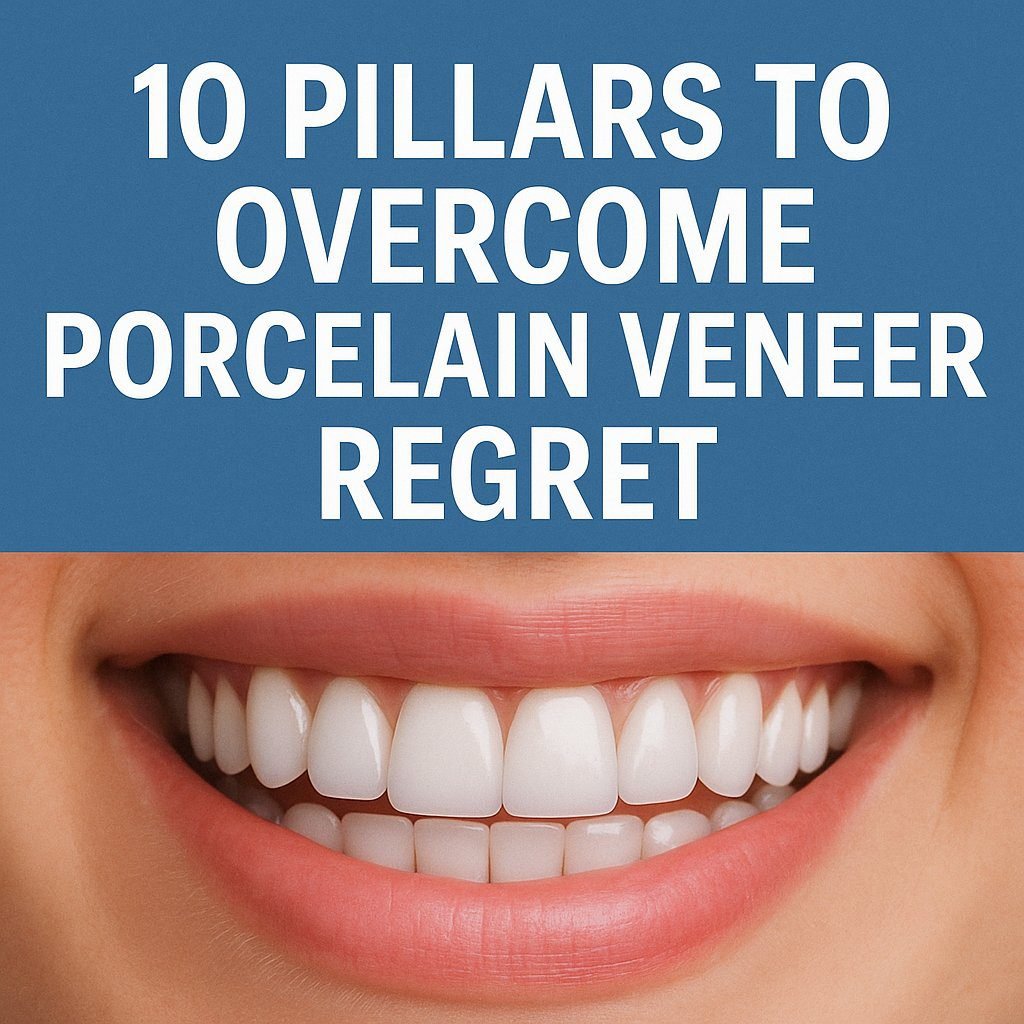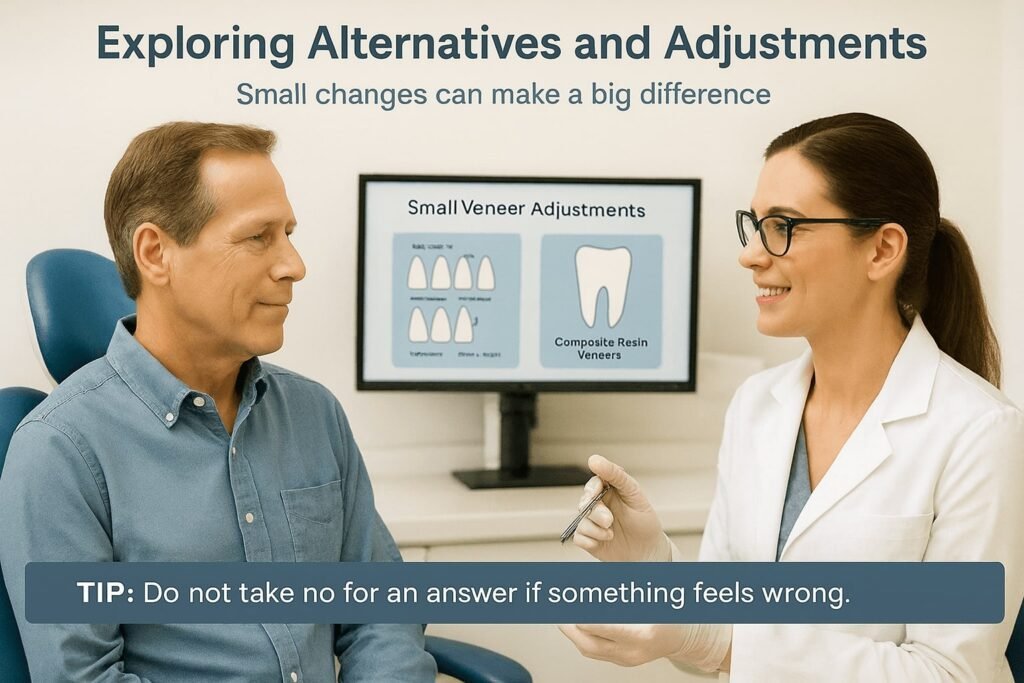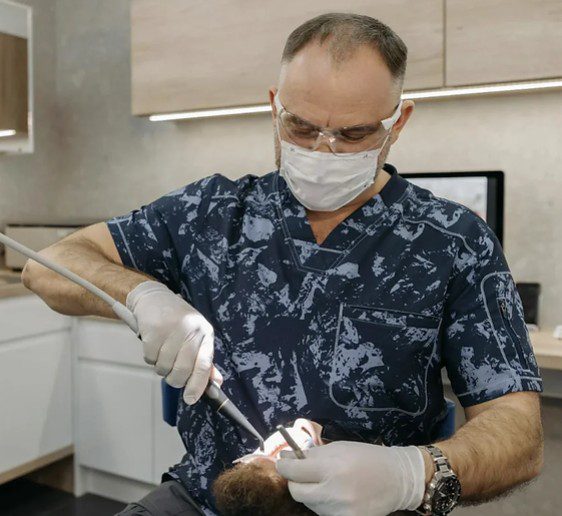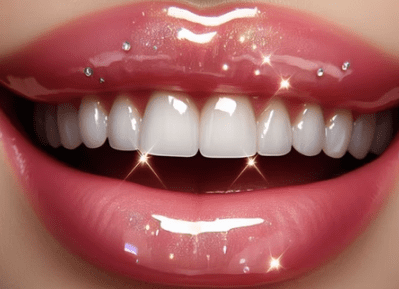Living With Veneer Regret? These 10 Pillars Can Help You Heal
Porcelain veneers are often sold as the ultimate shortcut to a flawless smile. Dentists highlight their durability, their Hollywood appearance, and the confidence they can bring. What rarely gets discussed is the darker side, the regret many patients experience once the initial excitement fades.

For some, the regret stems from aggressive tooth shaving and permanent loss of enamel. For others, it is the emotional toll of not recognizing themselves in the mirror, the financial burden of replacement costs, or chronic sensitivity that lingers long after the procedure.
The truth is this: veneers are not always about bad dentistry. They may be done well, symmetrical, and color matched, and still not feel right. Regret is often about the gap between expectation and reality.
Over the past 20 years we have listened to thousands of people in the community who live with veneer regret. Their stories, struggles, and recoveries shaped the framework below.
These 10 pillars are not theory, they come directly from the lived experience of patients who have walked this path and found ways to heal.
If you are struggling with veneer regret, you are not alone. Healing is possible. Below are the 10 pillars to help you process the experience, find peace, and move forward.
1. Acceptance of What Happened
The first step is acknowledging the decision and its permanence. Denial prolongs pain. Acceptance does not mean approval, it means giving yourself permission to stop reliving what ifs and start focusing on what now.

TIP: Limit how often you stare in the mirror or take selfies. In the first month it is natural to look often. But obsessively checking your smile thousands of times only deepens anxiety. Choose a set time once a day to evaluate your teeth, then move on with your day.
2. Education and Truth
Understand the biological cost of veneers: enamel removal, the likelihood of replacements every 10 to 15 years, and potential for complications. Knowledge helps replace confusion with clarity and allows you to advocate for yourself in future dental decisions.
TIP: Learn how stress responses affect you. Obsessive research or spiraling anxiety can cloud your judgment. Practicing slow, controlled breathing helps calm your nervous system and makes it easier to absorb information with clarity.
3. Emotional Healing
Veneer regret is not only physical. It is deeply emotional. Many describe it as a form of grief, mourning the natural smile that can never return. Talking to a therapist, journaling, or joining support communities can help process the trauma.
TIP: Movement heals. Exercise, yoga, and meditation help release stress and restore balance. Pair these with journaling or therapy to support both mind and body.

4. Financial Planning
One of the hardest truths is the ongoing cost. Each replacement cycle can cost tens of thousands of dollars. Creating a financial plan, whether through savings, financing, or exploring alternatives like composite resin, helps regain a sense of control.

TIP: Build structure into your finances. Even small steps like setting aside a fixed amount each month replace fear with action. Routine and planning create stability in uncertain situations.
5. Exploring Alternatives and Adjustments

If your veneers do not feel right, explore every option before committing to a full redo. Sometimes the answer is not replacing them all but making small veneer adjustments. Dentists can shorten them, reshape edges, or slightly carve them down so they fit more naturally. Even a two millimeter adjustment can make a huge difference in comfort and appearance.
If adjustments are not enough, enhanced composite resin veneers or minimally invasive bonding can offer safer, more affordable alternatives to porcelain.
But do not rush. Avoid reaching out to hundreds of dentists in desperation. Wait until you are emotionally ready, have finances saved, and can commit to the process carefully. If you do need to redo them all, take your time and plan each step.
TIP: Do not take no for an answer if something feels wrong. Advocate for yourself, ask about adjustments first, and only consider redoing veneers once you have exhausted every option.
6. Prioritizing Oral Health
Regret can sometimes make patients neglect their teeth out of frustration. Recommit to daily oral care and regular checkups. Protecting the foundation of your smile ensures you do not lose more than you already have.
TIP: Treat your body as a whole system. Hydration, nutrition, and good sleep directly affect oral health and overall resilience. Caring for your body restores some of the control veneer regret may have taken away.
7. Community Support
You are not alone. Thousands of patients worldwide are silently experiencing the same regret. Connecting with others who understand, whether through online communities, social media, or advocacy groups, helps you feel supported and less isolated.
TIP: Balance online support with offline connection. Friends, family, or local groups can keep you grounded in real life when the internet feels overwhelming.
Where to Connect: Our website BeautyBeyondVeneers.com raises awareness about the dangers of porcelain veneers and shares patient-led resources. You can also join our Reddit community r/porcelainveneerstruth, a space created for patients to share honest stories and support one another. This forum is not intended for dentists to advertise or give input, it is patient-driven and focused on real experiences.
8. Redefining Beauty
Part of veneer regret is rooted in comparison. The quest for perfect teeth is fueled by filtered images and celebrity marketing. Relearning to value authenticity, that real smiles even imperfect ones carry more warmth, is key to emotional recovery.

TIP: Practice daily gratitude. Write down three things you appreciate about yourself or your life. Gratitude shifts focus away from flaws and onto the richness of your reality.
9. Patient Advocacy
Sharing your story is powerful. Speaking up raises awareness and may help someone else avoid the same mistake. Advocacy transforms pain into purpose, turning regret into a tool for positive change.
TIP: Start small. Share your experience with a trusted friend or post in a support forum. Every time you speak, you reclaim power over your story.
10. Hope for the Future
Above all, remember that regret does not define you. Dental technology evolves. Your emotional resilience grows. Healing, whether physical, financial, or emotional, is always possible. You are more than your smile, and peace is within reach.
TIP: Believe in something bigger than yourself, whether that is faith, the universe, or simply time. Hope is not wishful thinking, it is the daily choice to move forward.

Closing Thoughts
Porcelain veneer regret is real, and it can feel overwhelming. But the 10 pillars above provide a roadmap: acceptance, education, healing, adjustments, and community. Through practical steps like limiting obsessive mirror checks, exercising, meditating, practicing gratitude, and connecting with others, you can find peace again.
These pillars exist because of people willing to share their stories. By healing together, we make sure others do not have to suffer in silence.
Protect your smile, protect your peace, because nothing is more beautiful than authenticity.

If you have questions about this article, need help understanding your options, or want to know what to ask during a consultation, we’re here to help. Just leave us a message — even a quick question like:
- “Do you know any qualified dentists who offer enhanced composite resin veneers?”
- “How do I know if this is right for me?”
- “What are the typical costs among providers for enhanced composite resin veneers?”
- “What should I ask my dentist before starting treatment?”
- “Is there a way to tell if my teeth are healthy enough for this type of veneer?”
- “What’s the difference between traditional bonding and enhanced composite resin?”
Every person’s case is unique, and while we’ll do our best to answer your questions and share helpful insights, always consult a licensed dental professional before making any treatment decisions.





